How Virtual Reality in Kids Education Changes Learning
As technology becomes more embedded in daily life, education continues to evolve alongside it. One of the most exciting developments is the use of virtual reality in kids education, a concept that is no longer just futuristic. From classrooms to living rooms, VR is now used to enhance how children explore, understand, and retain knowledge.
This article explores how VR is transforming the way kids learn, its benefits, real-world applications, and how parents and schools can embrace this shift.
What Is Virtual Reality in an Educational Context?

Virtual reality is a digital simulation that allows users to interact with a 3D environment. In educational settings, it means that students can immerse themselves in topics such as history, science, art, and space in ways that were never possible before. Instead of reading about ancient civilizations, children can walk through virtual ruins. Rather than imagining the solar system, they can experience it in full scale.
This hands-on approach to learning is what makes virtual reality in kids education so impactful.
From Passive Learning to Immersive Exploration
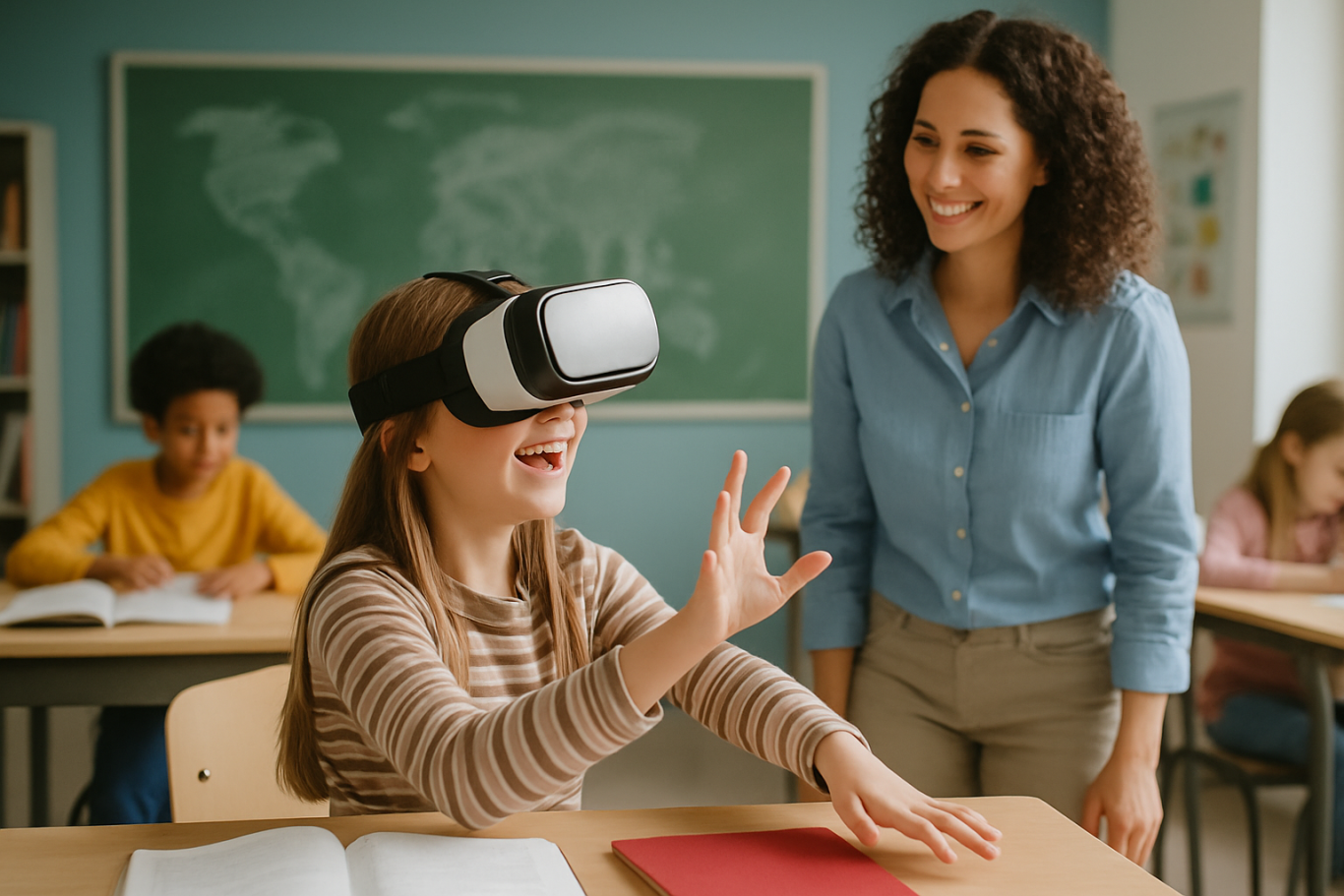
Traditional learning often relies on reading, note-taking, and static visuals. While these methods are effective, they are not always engaging for every type of learner. Virtual reality enables multisensory learning experiences that feel more like exploration than instruction.
For example, a child learning about volcanoes can virtually step inside one to see lava flow and tectonic plate movement. This type of experiential learning boosts curiosity and helps children grasp abstract or complex topics much faster.
Key Benefits of Virtual Reality in Kids Education
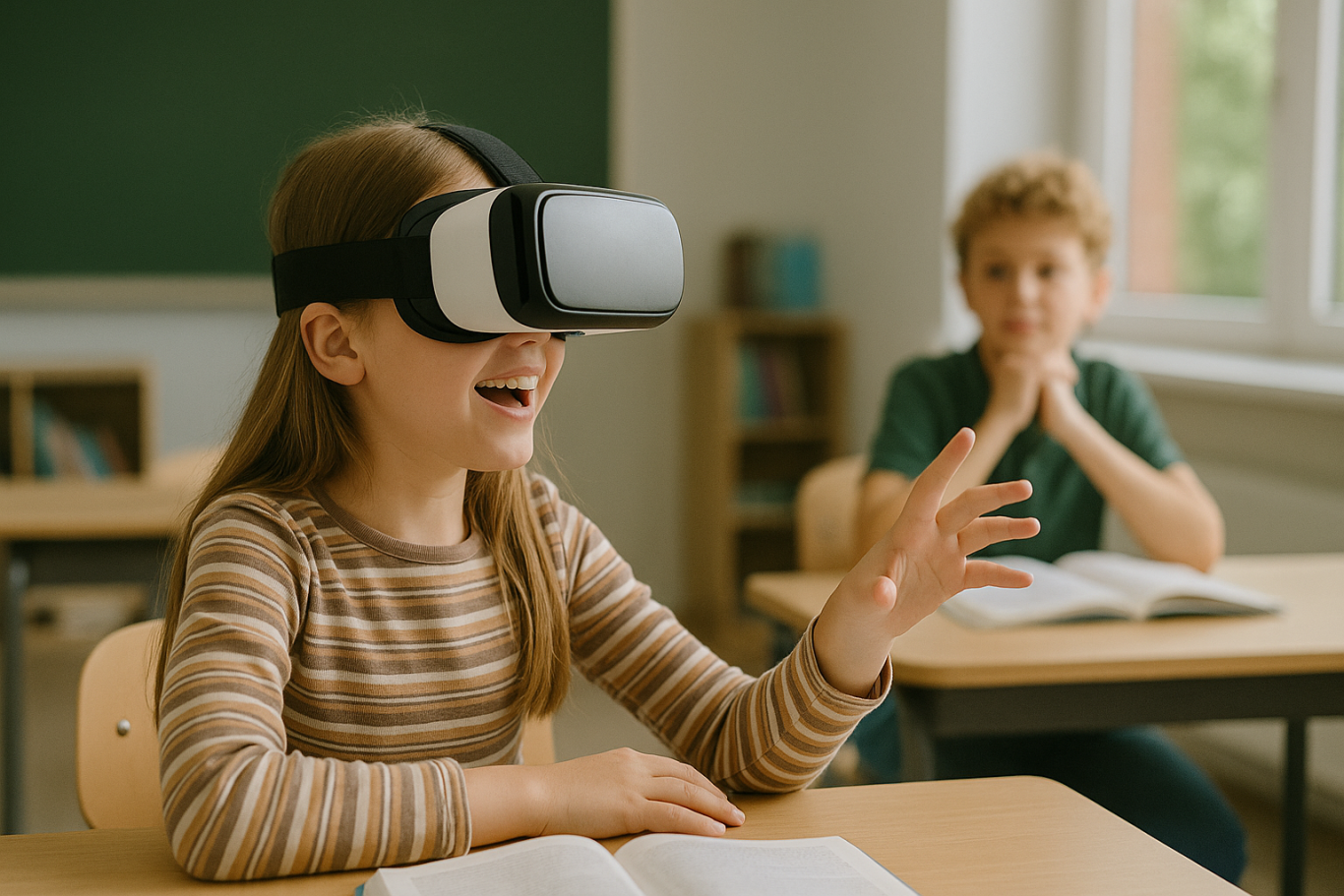
1. Increased Engagement and Motivation
VR transforms lessons into adventures. Children are naturally more engaged when learning feels like play. This makes it easier to hold their attention and deepen their focus on the subject matter.
2. Better Knowledge Retention
When children interact with content instead of simply reading or listening, their brains form stronger memory connections. VR helps students retain information through direct experience, not just memorization.
3. Safe Exploration of Real-World Concepts
Certain experiments or field trips may be too dangerous, expensive, or inaccessible in real life. Virtual reality allows students to simulate these experiences safely. From exploring deep ocean ecosystems to observing chemical reactions, VR enables safe and repeatable learning.
4. Encourages Independent Learning
Virtual reality in kids education supports autonomy. Children can learn at their own pace, repeat difficult lessons, and explore topics that interest them deeply. This fosters independent thinking and self-directed learning.
5. Inclusion for Different Learning Styles
Some children learn visually, others through movement or sound. VR incorporates multiple modes of learning, helping educators reach students who might otherwise struggle with standard teaching formats.
Examples of VR Use in Real Classrooms
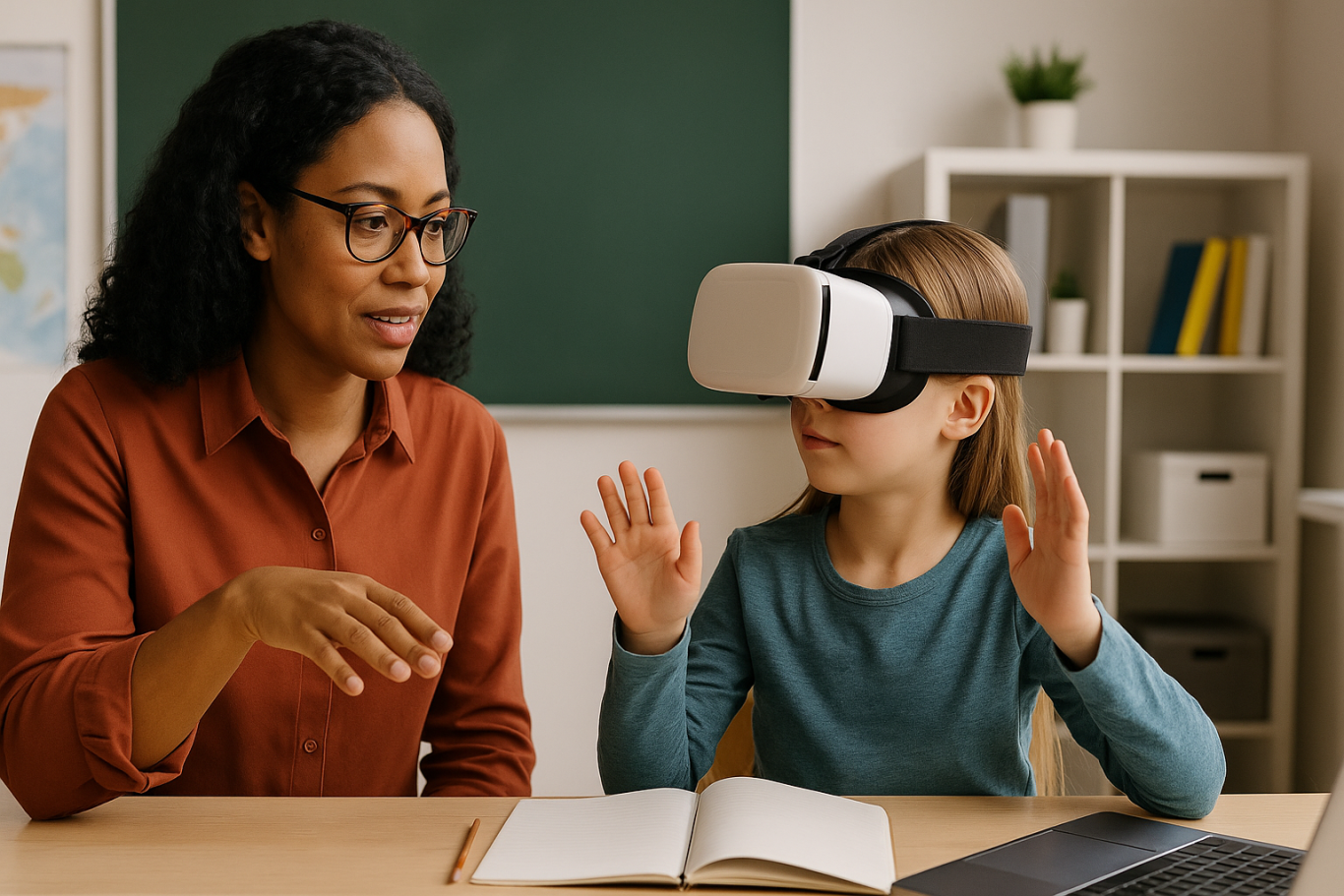
Many educational institutions and platforms are already applying virtual reality in kids education. Some noteworthy tools include:
- Google Expeditions: Offers virtual field trips to locations such as the Great Wall of China or the surface of Mars.
- VictoryXR: Creates full science labs and virtual classrooms where students can conduct experiments.
- ClassVR: Provides ready-made curriculum-aligned content for schools to use with their students.
These examples demonstrate how virtual reality in kids education is already improving outcomes in subjects like science, history, and geography.
How Parents and Teachers Can Get Started
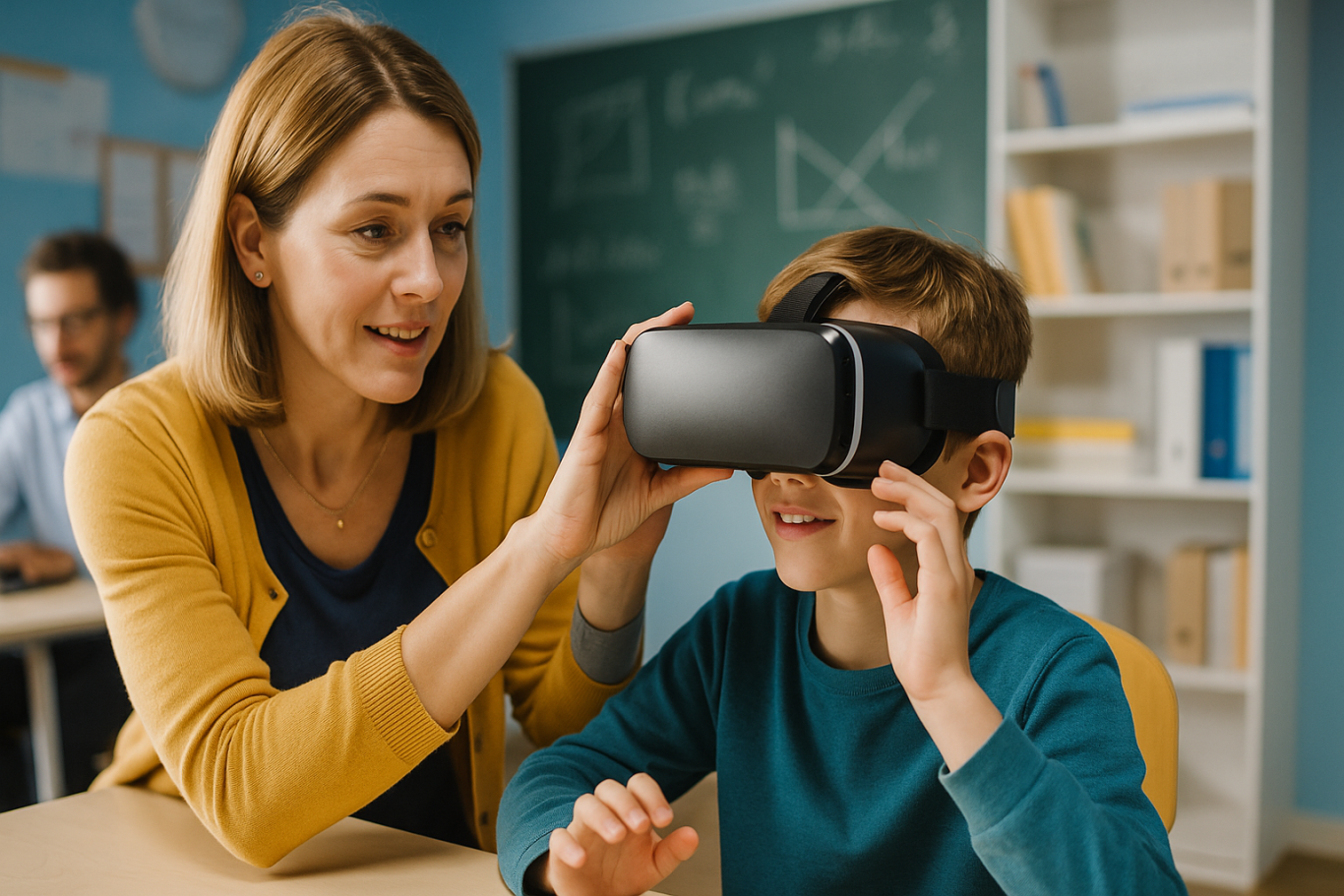
Adopting VR technology for learning doesn’t have to be expensive or difficult. Many educational VR platforms are compatible with smartphones and entry-level headsets. Parents can start by:
- Downloading trusted educational VR apps
- Using cardboard VR viewers with supported apps
- Setting screen time guidelines and offering support during learning sessions
Teachers can integrate VR into their lesson plans by using tools that align with existing curriculum. It is important to ensure that content is age-appropriate and has clear learning objectives.
Things to Consider

While the benefits are clear, there are a few considerations before adopting VR for children’s learning:
- Supervision: Younger kids need adult guidance to navigate VR content safely.
- Screen Time: Use VR as a supplement, not a replacement for human interaction or physical play.
- Content Quality: Not all VR apps are educational. Review each platform and select those developed by educators or trusted publishers.
- Equipment Requirements: Make sure devices are compatible and safe for children’s use.
With thoughtful implementation, virtual reality in kids education can be a highly positive tool for both home and school environments.
The Future of Learning Is Immersive
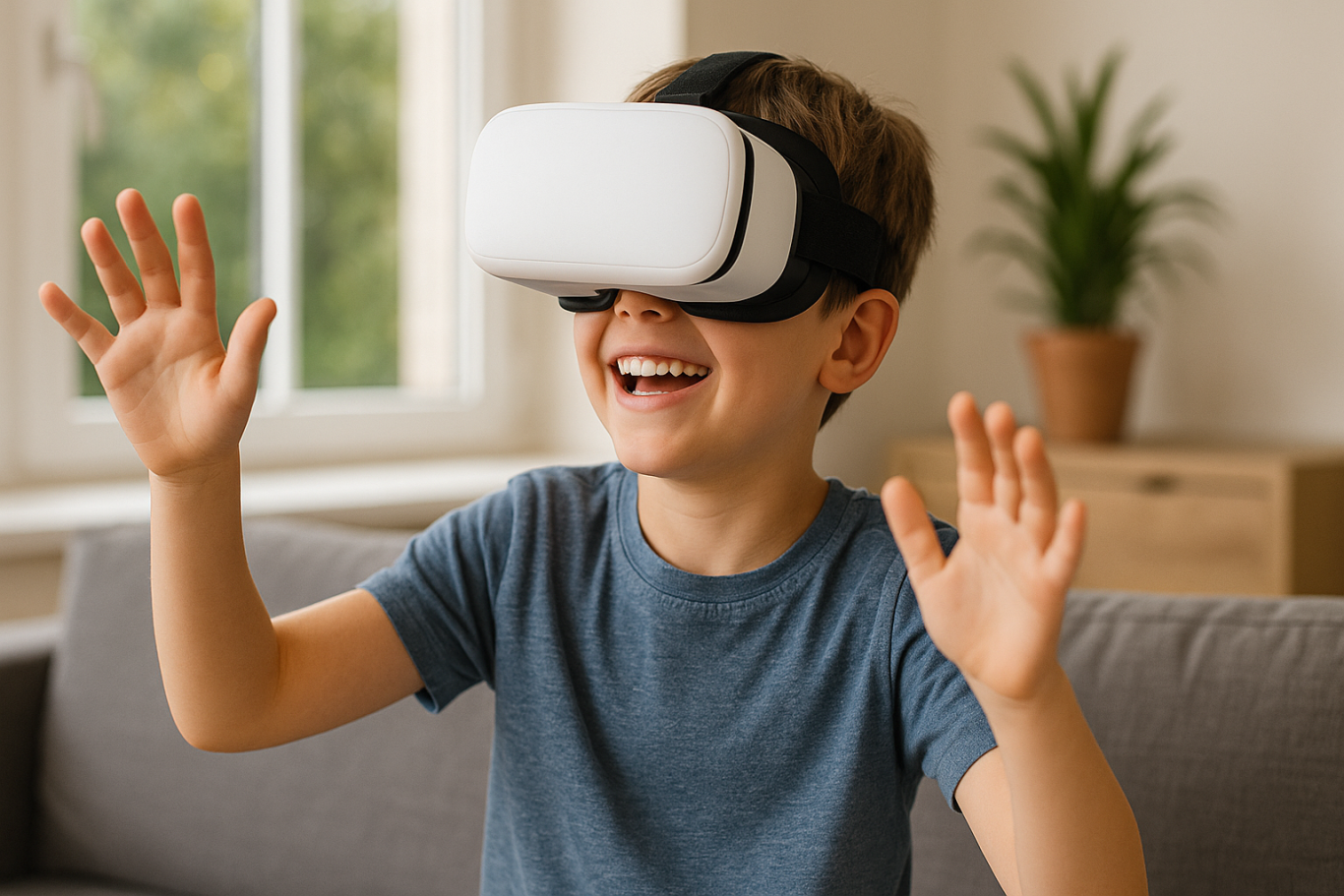
In 2025, virtual reality in kids education is no longer a novelty. It is becoming a core part of how children learn new skills, discover the world, and stay engaged in school. The technology is helping transform learning from something passive into something active, memorable, and exciting.
As the cost of VR continues to decrease and content improves, more families and schools will be able to offer students this immersive learning experience.
Support Your Child’s Learning Journey with Timedoor Academy
Looking for an engaging and tech-friendly way to support your child’s education? Timedoor Academy offers interactive online courses in coding, robotics, math, and digital creativity. While not all our classes use VR, they are designed with innovation and child engagement at the core.

Ingin tahu detail program?
Sign up for a free trial class today and see how your child can build future-ready skills in a fun and structured environment — all from the comfort of home.